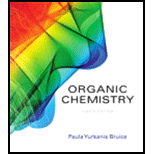
(a)
Interpretation:
To determine the products formed in the following reactions.
Concept introduction:
The carboxylic acid and its derivatives like esters, acyl chlorides and amides have groups such as
(b)
Interpretation:
To determine the products formed in the following reactions.
Concept introduction:
The carboxylic acid and its derivatives like esters, acyl chlorides and amides have groups such as
(c)
Interpretation:
To determine the products formed in the following reactions.
Concept introduction:
The carboxylic acid and its derivatives like esters, acyl chlorides and amides have groups such as
(d)
Interpretation:
To determine the products formed in the following reactions.
Concept introduction:
The carboxylic acid and its derivatives like esters, acyl chlorides and amides have groups such as
(e)
Interpretation:
To determine the products formed in the following reactions.
Concept introduction:
The carboxylic acid and its derivatives like esters, acyl chlorides and amides have groups such as
(f)
Interpretation:
To determine the products formed in the following reactions.
Concept introduction:
The carboxylic acid and its derivatives like esters, acyl chlorides and amides have groups such as
(g)
Interpretation:
To determine the products formed in the following reactions.
Concept introduction:
The carboxylic acid and its derivatives like esters, acyl chlorides and amides have groups such as
(h)
Interpretation:
To determine the products formed in the following reactions.
Concept introduction:
The carboxylic acid and its derivatives like esters, acyl chlorides and amides have groups such as
(i)
Interpretation:
To determine the products formed in the following reactions.
Concept introduction:
The carboxylic acid and its derivatives like esters, acyl chlorides and amides have groups such as
(j)
Interpretation:
To determine the products formed in the following reactions.
Concept introduction:
The carboxylic acid and its derivatives like esters, acyl chlorides and amides have groups such as
Want to see the full answer?
Check out a sample textbook solution
Chapter 15 Solutions
Organic Chemistry; Organic Chemistry Study Guide A Format: Kit/package/shrinkwrap
- Chemistry: Matter and ChangeChemistryISBN:9780078746376Author:Dinah Zike, Laurel Dingrando, Nicholas Hainen, Cheryl WistromPublisher:Glencoe/McGraw-Hill School Pub Co
